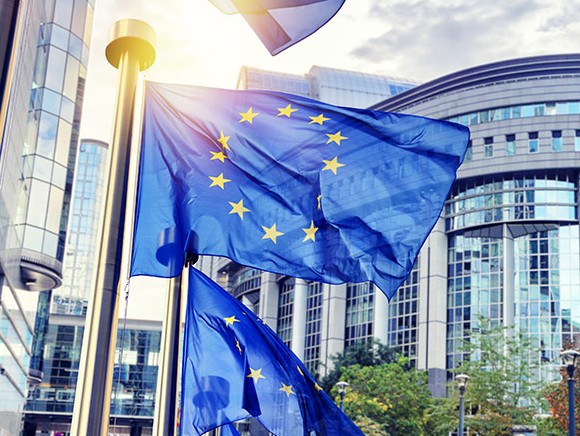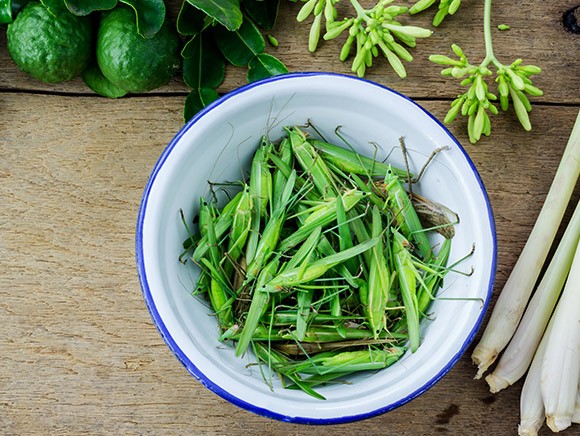
The new Novel Food Regulation was adopted on 25 November 2015 and will come into force on 1 January 2018. What will change? Will locusts still be permitted on supermarket shelves after that date?
There are a number of changes compared with the legislation dating from 1997. For example, the definition of what is classed as ‘novel food’ has been amended and there will be a centralised authorisation procedure, whereby applications will be submitted to the European Commission (instead of the authority in the relevant Member State) and EFSA will conduct the risk analysis. Another new aspect is the introduction of a simplified procedure (notification).
Novel food is defined as ‘food or food ingredients not consumed by humans to a significant degree in the European Union prior to 15 May 1997’. Examples include products obtained from new sources or produced using ‘novel’ methods such as new breeding or rearing techniques. Novel food can also refer to exotic products that are currently traditionally eaten in other countries but not yet in the EU, such as certain insects. Products that are used in foodstuffs as an additive or aroma or food products that contain or are produced from genetically modified organisms are not regarded as novel food.
The new regulation is intended to introduce a simpler, faster and more efficient approval procedure for new foodstuffs. In order to make it easier to trade in traditional food products from non-EU countries, the new regulation includes a more appropriate assessment procedure for foods that are regarded as novel in the EU. However, it is necessary to demonstrate that a traditional foodstuff has never caused food safety issues and that the EU Member States or EFSA have not identified any safety risks. An official application for permission for a novel food to be placed on the market must be submitted to both the European Commission in Brussels and the authorised body in one of the European Member States. In the Netherlands, the relevant authorised body is the Ministry of Health, Welfare and Sport.
In the new situation, there are two types of application procedures. The first is for a novel food (authorisation) if there is currently no food on the market that can be used to demonstrate substantial equivalence. The second option is a simplified application procedure (notification). After notification, the novel food can immediately be placed on the European market if substantial equivalence can be demonstrated with: (a) an existing food or (b) a novel food for which European approval has already been issued.
A product may only be placed on the market when at least one Member State finds the substantial equivalence sufficiently justified. That’s why this simplified procedure is always handled by the authorised body in one of the European Member States.
Novel foods are only approved in the EU if they do not pose a risk to public health, are not nutritionally disadvantageous when replacing a similar food and are not misleading to the consumer. If a foodstuff is approved to be placed on the market in the EU, this means that it may be sold in all EU Member States. Individual EU Member States can, however, suspend or temporarily limit the sale and use of a novel food if they believe that it poses a risk to human health in line with the safeguard provisions of the General Food Law.
Insects are already consumed on a large scale around the world. Up until now, the use of insects as food or as an ingredient in food products was prohibited in many EU Member States. However, the use of insects in food was ‘tolerated’ in a number of Member States in the absence of overarching European legislation pertaining to edible insects. In the Netherlands, insects are already being farmed for human consumption in line with the standards in the General Food Law. One of the species involved is the migratory locust (Locusta migratoria). The new European legislation makes it clear that all insect-based products are covered by the rules for novel food. In the EU, insects fall under the novel food definition as ‘food ingredients isolated from animals’, as do insect parts (such as the wings, head or legs). Furthermore, the new legislation makes it clear that whole insects fall under the definition of novel food, at least providing that they were not consumed by humans to a significant degree in the European Union prior to 15 May 1997.

This could result in it being necessary to complete an approval procedure first, before insects can be used as food. In certain cases it will be possible to make use of a transitional arrangement. The transitional period will apply for insects in most EU Member States, meaning that insects that have been legally placed on the market before 1 January 2018 may continue to be marketed and sold during the two-year transitional period, until 2 January 2020 at the latest. An application must be submitted under the new regulation during this period.
Source: Foto vlaggen: ©symbiot/Shutterstock.com; Foto sprinkhanen: ©artpritsadee/Shutterstock.com